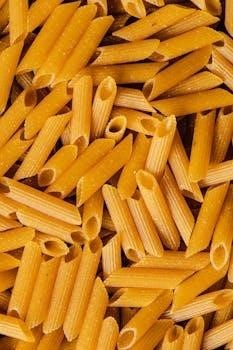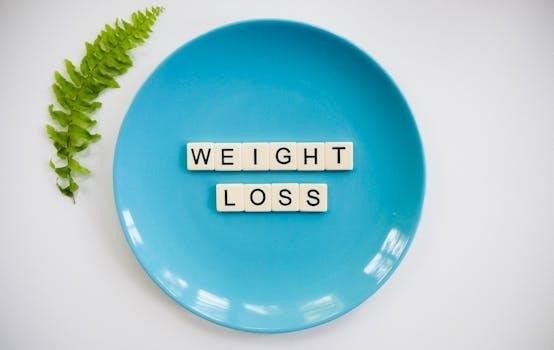aip diet plan pdf free


Seeking a free AIP diet plan PDF? You’re in luck! Many resources offer printable guides‚ meal plans‚ and food lists to help you navigate the Autoimmune Protocol diet successfully and conveniently.
What is the AIP Diet?
The AIP diet‚ or Autoimmune Protocol diet‚ is a specialized elimination diet designed to reduce inflammation and alleviate symptoms associated with autoimmune diseases. It’s a stricter version of the Paleo diet‚ focusing on nutrient-dense foods while eliminating potential triggers like grains‚ legumes‚ nightshades‚ dairy‚ eggs‚ nuts‚ seeds‚ and processed foods. The core principle revolves around healing the gut‚ as digestive health is often compromised in individuals with autoimmune conditions.
By removing these potentially inflammatory foods‚ the AIP diet aims to calm the immune system‚ allowing the body to repair and rebuild. It emphasizes consuming anti-inflammatory foods like bone broth‚ wild-caught fish‚ green vegetables‚ and healthy fats. The ultimate goal is to identify individual food sensitivities through a carefully structured reintroduction process after the elimination phase. This helps create a personalized‚ sustainable diet that supports long-term health and well-being.
Foods Allowed on the AIP Diet
The AIP diet focuses on nutrient-dense foods that support healing and reduce inflammation. Embracing a variety of options is crucial. Vegetables are a cornerstone‚ excluding nightshades like tomatoes and peppers. Leafy greens‚ cruciferous vegetables‚ and root vegetables are all excellent choices. High-quality proteins such as wild-caught fish‚ grass-fed meats‚ and organ meats are encouraged.
Healthy fats from sources like avocados‚ olive oil‚ and coconut oil are also important. Fermented foods‚ such as kombucha and sauerkraut‚ can support gut health. Fruits in moderation provide essential vitamins and antioxidants. Herbs and spices‚ excluding seed-based spices‚ add flavor and potential health benefits. Bone broth is a valuable addition‚ offering collagen and nutrients. Focusing on these permitted foods ensures a diverse and nourishing diet while minimizing potential triggers.

Vegetables and Herbs
Vegetables and herbs are fundamental to the AIP diet‚ providing essential phytonutrients and fiber. These components enable our bodies to flourish. The AIP diet emphasizes a plant-centric approach‚ advocating for up to nine servings of vegetables daily. Allowed vegetables include leafy greens like spinach and kale‚ cruciferous vegetables like broccoli and cauliflower‚ and root vegetables such as sweet potatoes and carrots.
These choices are packed with vitamins‚ minerals‚ and antioxidants. Herbs‚ excluding seed-based varieties‚ add flavor and therapeutic benefits. Consider incorporating options like basil‚ oregano‚ and thyme into your meals. They offer anti-inflammatory properties and enhance the taste of dishes. Emphasizing a wide array of vegetables and herbs ensures a nutrient-rich diet that supports gut health and reduces inflammation‚ crucial for managing autoimmune conditions.
Foods to Avoid on the AIP Diet
The AIP diet involves eliminating several food groups known to trigger inflammation and immune responses. These include grains like rice‚ wheat‚ oats‚ corn‚ and pseudo-grains such as quinoa and buckwheat. Dairy products‚ including milk‚ cheese‚ butter‚ and yogurt‚ are also off-limits. Nightshade vegetables like tomatoes‚ potatoes‚ eggplants‚ and peppers are restricted due to their potential inflammatory compounds.
Legumes‚ including beans‚ lentils‚ and peanuts‚ are excluded as well. Additionally‚ nuts and seeds are avoided during the elimination phase. Processed foods‚ refined sugars‚ and artificial additives should be strictly eliminated. These restrictions aim to reduce gut irritation and calm the immune system. By avoiding these potential triggers‚ the AIP diet seeks to promote healing and reduce symptoms associated with autoimmune conditions.
Benefits of the AIP Diet
The AIP diet offers several potential benefits for individuals with autoimmune conditions. One key advantage is its focus on nutrient-dense foods‚ promoting overall health and well-being. By eliminating common inflammatory triggers‚ the AIP diet can help reduce inflammation throughout the body. This reduction in inflammation may lead to decreased pain‚ improved energy levels‚ and enhanced overall comfort.
Furthermore‚ the AIP diet supports gut health by removing potentially irritating foods and encouraging the consumption of gut-healing options like bone broth and fermented vegetables. A healthy gut microbiome is crucial for immune function and overall health. Adhering to the AIP diet may also help identify specific food sensitivities‚ allowing for a more personalized and sustainable long-term dietary approach. By addressing inflammation‚ supporting gut health‚ and identifying food sensitivities‚ the AIP diet offers a comprehensive approach to managing autoimmune conditions.
Reducing Inflammation
A primary benefit of the AIP diet is its potential to significantly reduce inflammation within the body. Autoimmune diseases are characterized by chronic inflammation‚ which can contribute to a wide range of symptoms and health complications. The AIP diet aims to mitigate this inflammation by removing foods that are known to trigger inflammatory responses in susceptible individuals.
By eliminating grains‚ legumes‚ nightshades‚ dairy‚ eggs‚ nuts‚ seeds‚ and processed foods‚ the AIP diet reduces the burden on the immune system‚ allowing it to calm down and reduce its inflammatory activity. Emphasizing nutrient-dense foods like vegetables‚ fruits‚ and healthy fats further supports the body’s natural anti-inflammatory processes. This combined approach can lead to a noticeable reduction in inflammation‚ resulting in symptom relief and improved overall well-being.

Supporting Gut Health
The AIP diet plays a crucial role in supporting gut health‚ which is often compromised in individuals with autoimmune conditions. A leaky gut‚ or increased intestinal permeability‚ is frequently associated with autoimmune diseases‚ allowing undigested food particles and toxins to enter the bloodstream‚ triggering an immune response and inflammation.
By removing potential gut irritants like grains‚ legumes‚ and processed foods‚ the AIP diet helps to heal and seal the gut lining. Furthermore‚ the AIP diet encourages the consumption of nutrient-rich foods that nourish the gut microbiome‚ promoting a healthy balance of beneficial bacteria. Bone broth‚ fermented vegetables‚ and a variety of colorful fruits and vegetables provide essential nutrients that support gut health and reduce inflammation‚ ultimately improving overall well-being.
AIP Diet Phases
The AIP diet is typically implemented in two distinct phases⁚ the elimination phase and the reintroduction phase. The elimination phase is the more restrictive period‚ where potentially inflammatory foods are removed from the diet. This phase aims to reduce inflammation and allow the gut to heal.
The reintroduction phase involves systematically reintroducing previously eliminated foods one at a time to identify individual food sensitivities. This phase helps to personalize the diet and determine which foods can be tolerated without triggering symptoms. Careful observation and tracking of symptoms are essential during the reintroduction phase to accurately assess food sensitivities and create a long-term‚ sustainable dietary plan. This structured approach ensures a tailored and effective AIP experience.
Elimination Phase
The elimination phase of the AIP diet is where you remove foods known to cause inflammation and gut irritation. This phase typically lasts for 30-90 days‚ but can vary. The goal is to reduce inflammation‚ alleviate symptoms‚ and allow the gut to heal.
During this time‚ you’ll focus on consuming nutrient-dense‚ anti-inflammatory foods like vegetables (excluding nightshades)‚ fruits‚ quality meats‚ and healthy fats. It’s crucial to be diligent in avoiding all restricted foods to give your body the best chance to recover. This phase requires commitment and careful planning‚ but it’s a vital step in identifying potential food triggers and paving the way for the reintroduction phase. Consistency is key for optimal results.
Reintroduction Phase
Following the elimination phase‚ the reintroduction phase allows you to carefully test foods previously avoided. The aim is to identify which foods‚ if any‚ trigger adverse reactions. This phase involves systematically reintroducing one food at a time‚ monitoring your body for any symptoms.
Choose a single food and consume it multiple times throughout a day. Then‚ abstain from that food for 5-6 days while observing for any delayed reactions. Document any symptoms‚ such as digestive issues‚ skin problems‚ or fatigue. If no reaction occurs‚ you can likely include the food back into your diet. This methodical approach helps personalize your AIP diet long-term‚ ensuring you only avoid foods that truly cause you problems. Patience and careful observation are paramount to a successful reintroduction phase.
Finding Free AIP Diet Plan Resources
Embarking on the AIP diet can feel overwhelming‚ but numerous free resources are available to support you. Many websites and organizations offer downloadable AIP diet plan PDFs‚ providing valuable guidance. These resources often include comprehensive food lists‚ meal ideas‚ and even sample meal plans to get you started.
Look for reputable sources such as AIP-certified coaches‚ nutritionists‚ or healthcare professionals. These individuals often share free content to educate and empower individuals on their AIP journey. Search online for “free AIP diet plan PDF” or “AIP food list printable” to discover a wealth of readily accessible information. Remember to critically evaluate the source and ensure the information aligns with established AIP principles.
AIP Food List Printable PDF
One of the most valuable tools for navigating the AIP diet is a comprehensive food list. Fortunately‚ many websites offer free‚ printable PDF versions of AIP food lists. These lists clearly outline which foods are allowed and which should be avoided during the elimination phase.
Having a readily available PDF food list simplifies meal planning and grocery shopping. You can easily reference the list to ensure you’re making appropriate food choices. Some PDFs even include additional information‚ such as explanations of why certain foods are excluded or tips for finding AIP-compliant alternatives. Consider printing out the list and keeping it handy in your kitchen or carrying it with you when you shop.
Free 4-Week AIP Meal Plan PDF
To simplify your AIP journey‚ consider utilizing a free 4-week AIP meal plan PDF. These resources provide structured guidance‚ offering a collection of recipes and meal ideas that adhere to the AIP guidelines. A well-designed meal plan eliminates the guesswork of what to eat‚ providing a clear roadmap for your meals.

These meal plans often include grocery lists‚ making shopping easier. Additionally‚ some offer meal prep checklists‚ helping you streamline your cooking process. While a free plan might not be fully customizable‚ it provides a valuable starting point. It introduces you to AIP-compliant ingredients and recipe ideas‚ allowing you to explore the diet without feeling overwhelmed. Look for plans that offer variety and focus on nutrient-dense foods to support your healing journey.
Customizing an AIP Diet Plan
While pre-made AIP diet plans offer a convenient starting point‚ customizing your plan is crucial for long-term success. Consider your individual needs‚ preferences‚ and potential food sensitivities beyond the standard AIP restrictions. Keeping a food journal can help identify personal triggers.
Tailor your plan to your lifestyle. If you have limited time for cooking‚ focus on simple recipes with minimal ingredients. Adjust portion sizes to meet your caloric needs and activity level. As you progress through the reintroduction phase‚ carefully track your reactions to reintroduced foods. This information will guide you in creating a personalized long-term diet that supports your health and well-being. Remember‚ the AIP diet is a journey‚ not a destination.